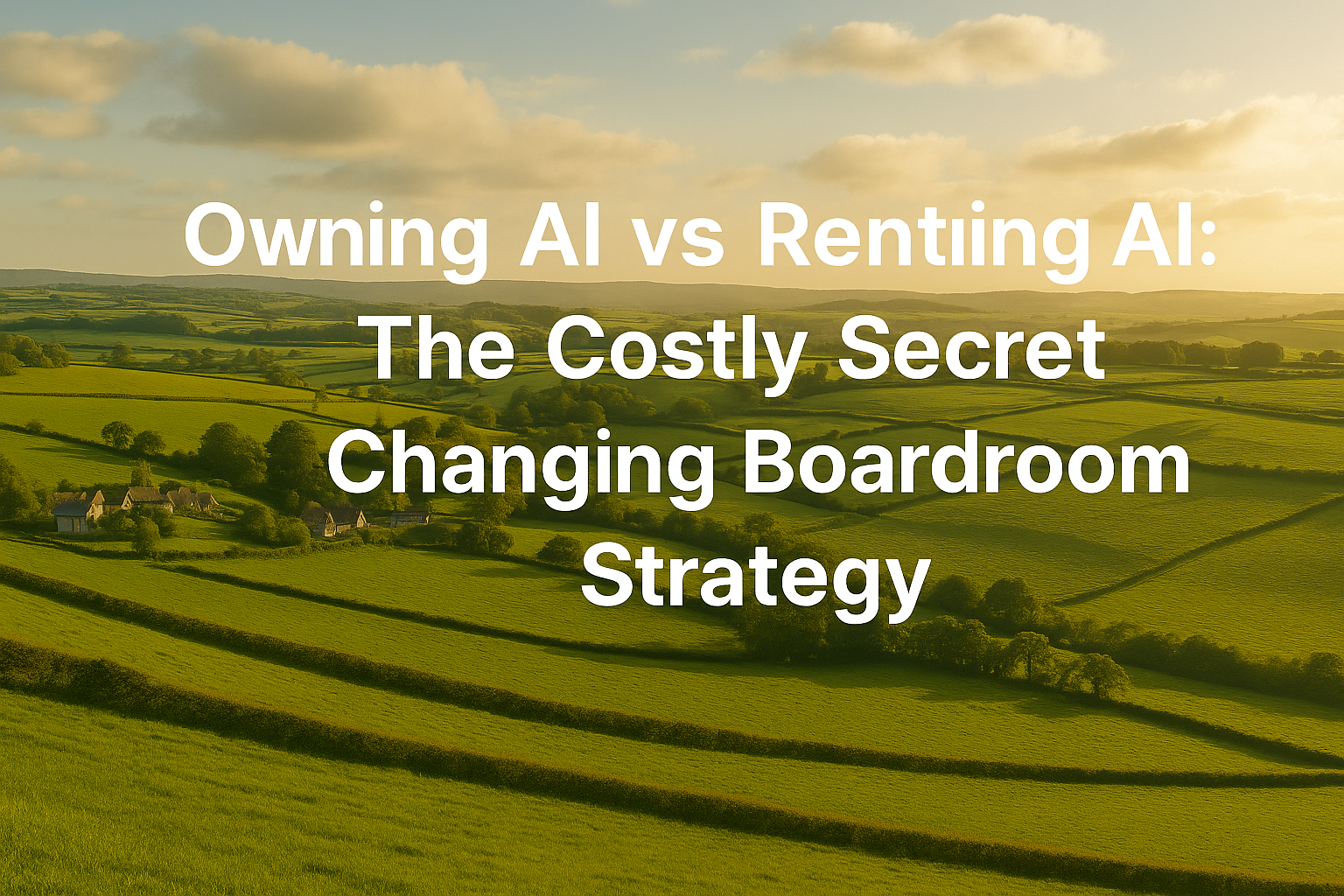
The Real AI Bill Is Coming Due – Is Your Cloud Spend Out of Control?
Open any Q3 board pack right now, and there’s likely a new line item: “AI Cloud Costs – Unplanned Overage”. Sound familiar? Over the last year, I’ve watched multiple leadership teams discover that chasing AI capability through cloud providers often means losing sight of who’s setting the price and whether you’re getting lasting value. Here’s what I wish every board knew before next year’s tech cycle resets.
The Hidden Cost Curve: Why ‘Pay-As-You-Go’ AI Gets Painful Fast
Most businesses treat AI-as-a-Service as ‘buying convenience’ – until the bills spiral. That’s not a fluke. IBM’s recent industry report found, “The average cost of computing is expected to climb 89% between 2023 and 2025. A staggering 70% of executives IBM surveyed cite generative AI as a critical driver of this increase. And the impact is already being felt across industries, with every executive reporting the cancellation or postponement of at least one generative AI initiative due to cost concerns.”
Every interaction, every agentic automation you deploy, gets billed. If your teams experiment (which you want), you pay for each run, tweak, or accidental retrain cycle. This model suits the provider, not you.
Your Tech Is ‘Contractor-First’ – And That’s No Way to Build Equity
Think about cloud AI as you would a contractor workforce: great for instant results, but expensive, externally controlled, and never embedded in your culture or knowledge base. Once your volume and dependency cross a threshold, you’re funding someone else’s margin and future, not your own.
As Jacob Dencik wrote in the same report, “The cost of computing, often reflected in cloud costs, will be a key issue to consider, as it is potentially a barrier for them to scale AI successfully.” If every new use case tips your OPEX line further into red, scale becomes risk.
Buy vs. Build: The Logic Flips in 2025
For a decade, the usual advice was: “Always buy, never build” — software, not infrastructure. But the economics of AI and fast-cycle, agentic workflows are up-ending that rule. Persistent per-run fees dodge unit cost improvements, so you never see the upside of tech advances unless you own part of the stack.
The old playbook hides two things:
- You pay premium rates even as hardware gets cheaper.
- The appetite for experimentation turbocharges usage — and thus, your cost line.
As board stewards, we owe it to our organisations to challenge whether ‘renting intelligence’ can ever deliver the leverage and governance the next five years will demand.
Action Points: What Your Board Should Do Before the Next Budget Cycle
- Demand a full audit of top use cases and AI cloud spend. Don’t accept aggregate totals – break it down to cost per workflow, per token, per agent employed.
- Stress-test ‘what if’ models: If experiment cycles double or always-on agents go live, does cost scale linearly or exponentially?
- Explore pilot migrations: Start by self-hosting non-core AI workloads. Can you reduce compute, data transfer, or storage costs and regain control over model selection or tuning?
- Get opinionated on ownership: Push for a strategic plan to build or selectively buy and then own mission-critical models. Review hybrid options.
- Check whether legacy infrastructure is being silently overloaded by agentic workflows. Address tech debt before it breaks resilience.
Wrapping Up: The Power (And Risk) Is Now in Your Hands
Innovation and budget discipline must go hand-in-hand. As Jacob Dencik cautions, “Even if something is technically feasible to do with AI, if the business case doesn’t stack up because of the cost of computing or the cost of training these models, then we’re not going to see the impact of AI on business activity that many people anticipate.”
What do I hope you take away? This isn’t hype. As of September 2025, the fastest way to lose agility and value is to ignore your real AI cost model. The window to seize control is short – but decisive action now will put you ahead of the herd.
Links:
- The hidden costs of AI: How generative models are reshaping technology budgets, Trust rating: High; Industry-defining IBM Think analysis of AI economics, October 2024
- AI adoption drives 'unmanageable' spike in cloud costs, Trust rating: High; Timely discussion on cloud cost escalations for enterprises, June 2024
- The Hidden Cost of AI in the Cloud, Trust rating: Medium; In-depth practical breakdown of cloud AI hidden costs for technology leaders, June 2024
Quotes:
- The hidden costs of AI: How generative models are reshaping technology budgets, Trust rating: High; October 2024
- "The report, titled 'The CEO’s guide to generative AI: Cost of compute,' reveals that the average cost of computing is expected to climb 89% between 2023 and 2025. A staggering 70% of executives IBM surveyed cite generative AI as a critical driver of this increase. And the impact is already being felt across industries, with every executive reporting the cancellation or postponement of at least one generative AI initiative due to cost concerns."
- "The cost of computing, often reflected in cloud costs, will be a key issue to consider, as it is potentially a barrier for them to scale AI successfully."
- "Even if something is technically feasible to do with AI, if the business case doesn’t stack up because of the cost of computing or the cost of training these models, then we’re not going to see the impact of AI on business activity that many people anticipate."

